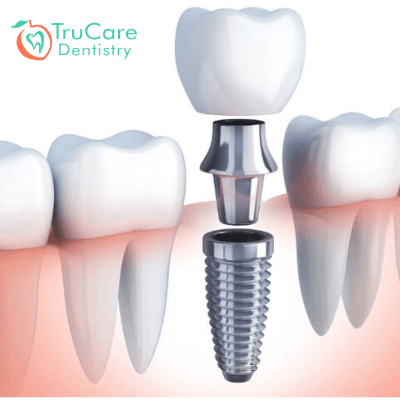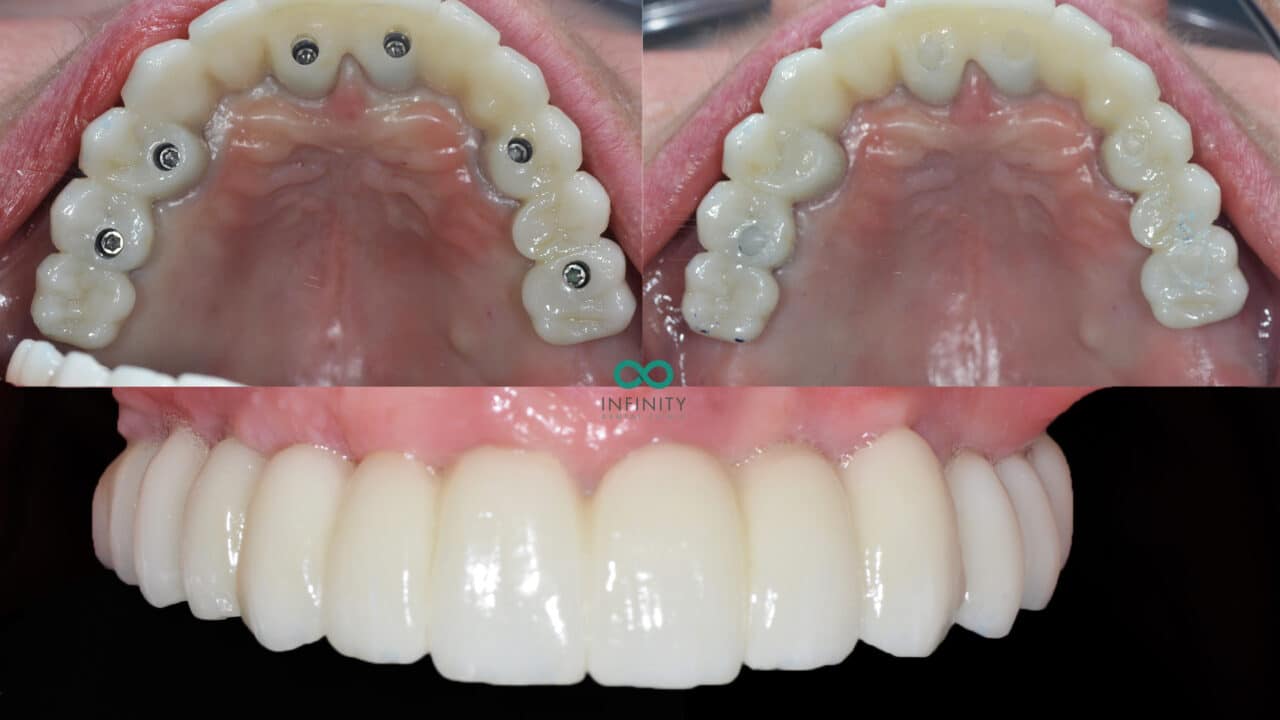Dental Implants Whole Mouth Wyoming MI - Dental Implants for Multiple Missing Teeth
Dental Implants Whole Mouth Wyoming MI - Dental Implants for Multiple Missing Teeth
Blog Article
Full Mouth Dental Implants Walker MI - Dental Implants Procedure: What to Know
The journey towards dental implants begins with an intensive evaluation of the jawbone's condition. When there may be insufficient bone density to support an implant, bone grafting turns into a vital procedure to recreate a stable visit this site basis. Understanding how much bone grafting is required for dental implants significantly influences the remedy plan, timeline, and click here for info total success rate.
The amount of bone grafting required is determined by a quantity of factors, together with the extent of bone loss, the implant's measurement, and the particular location throughout the mouth. In cases of significant bone loss due to periodontal ailments, trauma, or extended tooth loss, extra in depth grafting may be essential. Conversely, if the bone loss is minimal, a smaller graft might suffice.
Dental Implants Affordable Wyoming MI - Dental Implants - Missing Teeth - Dentures
The evaluation course of sometimes involves imaging research similar to X-rays or 3D scans, allowing the dental professional to visualize the bone structure (Dental Teeth Implants Walker MI). These photographs assist in determining the standard and quantity of existing bone. If the bone is deemed insufficient, the dentist will then outline the suitable grafting procedures
Grafting could be sourced from various areas. Autografts, which involve harvesting bone from the affected person's own physique, are sometimes deemed the gold commonplace. These supply glorious integration with the existing bone but include the drawback of additional surgery. Other options embody allografts, which use donor bone, and synthetic materials designed to imitate natural bone. Each possibility has its personal implications on healing and success rates.
After figuring out the required amount of bone grafting, the dental skilled will create a tailor-made plan for the affected person. This plan might include the timing of bone grafting in relation to the implant placement. In some cases, a graft can be performed simultaneously with the implant surgery. Alternatively, in more complicated eventualities, a separate healing period is indicated.
Healing timelines differ primarily based on the individual's health, the extent of grafting, and the kind of graft used. Generally, the therapeutic of a bone graft takes several months earlier than an implant can be positioned. During this time, bone regeneration occurs, leading to a steady base for the implant.
Dental Teeth Implants Jenison MI - Affordable Dental Implants
Patients typically surprise in regards to the risks related to bone grafting. While problems corresponding to infection or graft failure are attainable, these events are relatively uncommon. Adhering to post-operative care directions and attending follow-up appointments reduce risks and promote healing.
Once the bone has adequately healed, the dentist assesses the graft's success by evaluating the bone density and stability. If everything appears favorable, the next steps towards putting the dental implant can start. The success of this next step largely hinges on the quality of the bone graft and its integration with the surrounding bone.
Cost issues play an essential function in the decision-making course of. The expense of bone grafting varies based on supplies used, the complexity of the case, and geographic location. It is crucial for patients to debate finances upfront to avoid surprising bills later within the treatment.
Dental Tooth Implant Holland MI - Dental Implants - Missing Teeth - Dentures
Also, patients should have realistic expectations regarding the timeline and outcomes. Many elements can affect how much bone grafting is needed and its general effectiveness. A collaborative method involving the patient and the dental group not solely ensures readability but in addition enhances the chances of a successful outcome.

Maintaining good oral hygiene and common dental visits following the process is important. These practices can prevent problems and be positive that both the graft and the implant remain steady over time. The ongoing relationship with a dental professional is essential, especially within the months following the procedures.
In conclusion, understanding how much bone grafting is needed for dental implants encompasses a multi-faceted approach that considers bone quality, grafting types, healing time, and general patient health. The balance between reaching the specified aesthetic and functional outcomes while minimizing risks and complications is at the heart of dental implant procedures. The journey may be in depth, but a well-planned strategy maximizes the chances for a profitable, long-lasting result in restorative dental work.
- Determining the amount of bone grafting required for dental implants typically hinges on the preliminary bone density and quantity of the patient's jawbone.
- Each affected person's case is exclusive; factors similar to previous extractions, periodontal disease, or trauma can affect the necessity for grafting.
- A 3D imaging scan is often carried out to evaluate the precise dimensions of the available bone and inform the grafting strategy.
- The kind of dental implant placement—immediate or delayed—may dictate the amount of bone grafting needed for stability and integration.
- Different kinds of graft supplies, similar to autografts, allografts, or synthetic choices, can impact how a lot grafting material is required.
- Assessing the affected person's total health, age, and life-style habits can affect the healing course of, influencing graft quantity necessities.
- The depth and placement of the implant can necessitate varying amounts of graft material to secure optimal outcomes.
- Successful integration of the dental implant usually relies on adequate bone density, resulting in a tailor-made grafting strategy for each individual.
- Consultation with an oral surgeon will provide a clearer estimate of the bone grafting needed primarily based on complete evaluations and imaging outcomes.
- Post-grafting healing time varies; thus, a cautious evaluation is essential to discover out the ultimate amount of grafting required for profitable implantation.undefinedHow a lot bone grafting is required for dental implants?
Dental Implants Whole Mouth Jenison MI - What Are Dental Implants?
What is bone grafting and why is it needed for dental implants?undefinedBone grafting is a surgical process that adds bone or bone-like materials to the jawbone. It is necessary for dental implants when the existing bone is insufficient to help the implant, ensuring stability and long-term success.
How do I know if I need a bone graft for dental implants?undefinedYour dentist or oral surgeon will evaluate your jawbone through x-rays or 3D imaging to determine its density and quantity. If they find that you simply lack sufficient bone, they may suggest a bone graft earlier than continuing with the dental implant.
Dental Implant Norton Shores MI - Dental Implants - an overview
What elements influence the quantity of bone grafting needed?undefinedFactors embody the dimensions and placement of the implant web site, the health and density of current bone, and particular person therapeutic capacity (Dental Tooth Implant Grand Rapids MI). These components help the dentist determine the suitable amount of graft material needed
Are there different types of bone grafts used for dental implants?undefinedYes, there are several varieties, including autografts (from your own body), allografts (from a donor), xenografts (from animals), and artificial graft materials. Each kind has distinctive advantages and may be chosen based mostly on individual patient wants.
Dental Implant Dentures Walker MI - Learn More About Your Implants Treatment
How long does the bone grafting process take?undefinedThe duration varies primarily based on the complexity of the grafting process and the extent of the area treated. Generally, a bone grafting procedure can take wherever from half-hour to a few hours, relying on the specific circumstances.
What is the recovery time after a bone graft for implants?undefinedRecovery times can differ, however usually, initial healing might take a number of weeks, while complete integration of the graft with the bone can take a number of months. Your dentist will present a customized timeline primarily based in your situation.

Will I expertise pain after the bone grafting procedure?undefinedSome discomfort is frequent after a bone graft, nevertheless it's usually manageable with prescribed pain medicine. Most sufferers report that pain diminishes significantly inside a couple of days.
Dental Implants Whole Mouth Muskegon Heights MI - Dental Implants - an overview
How does bone grafting have an result on the general dental implant timeline?undefinedBone grafting may lengthen the overall timeline for receiving dental implants, because it requires a therapeutic interval earlier than implants could be positioned. This can add a quantity of months to the method however is important for a profitable implant placement.

Are there risks associated with bone grafting for dental implants?undefinedLike any surgical process, bone grafting carries some risks, corresponding to infection, graft failure, or problems associated to anesthesia. However, when performed by an experienced skilled, these risks are typically low.
Can I have dental implants placed instantly after a bone graft?undefinedIn many cases, dental implants cannot be placed immediately after a bone graft due to the want for the graft to combine into the existing bone. However, some techniques, like immediate loading, may permit for this beneath specific conditions. Your supplier will advise you on the finest option based on your circumstances.
Report this page